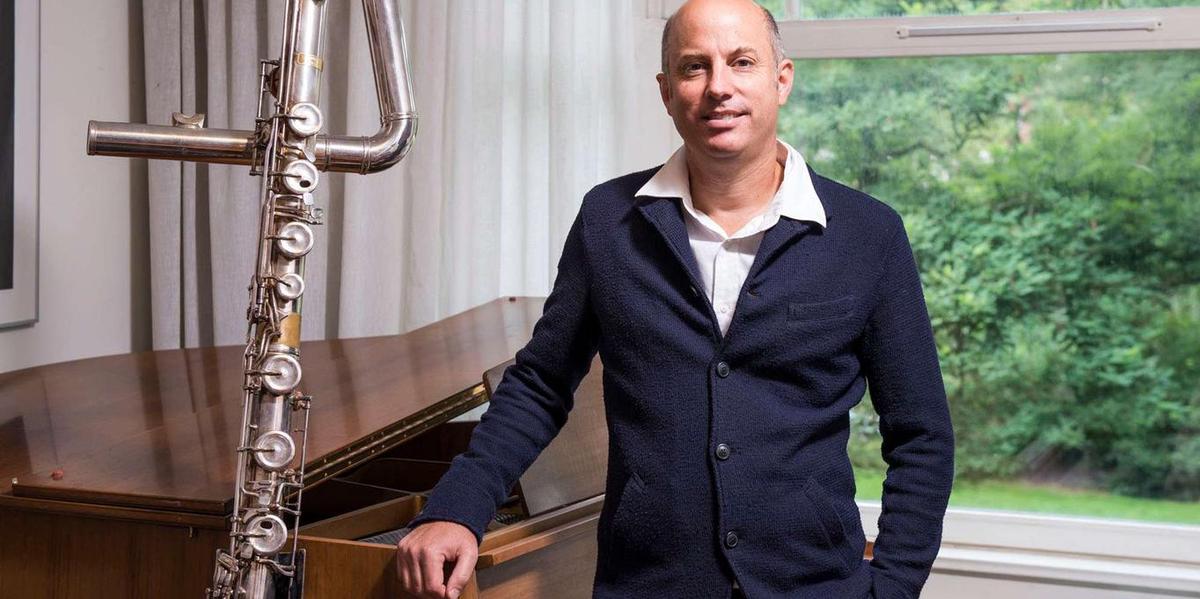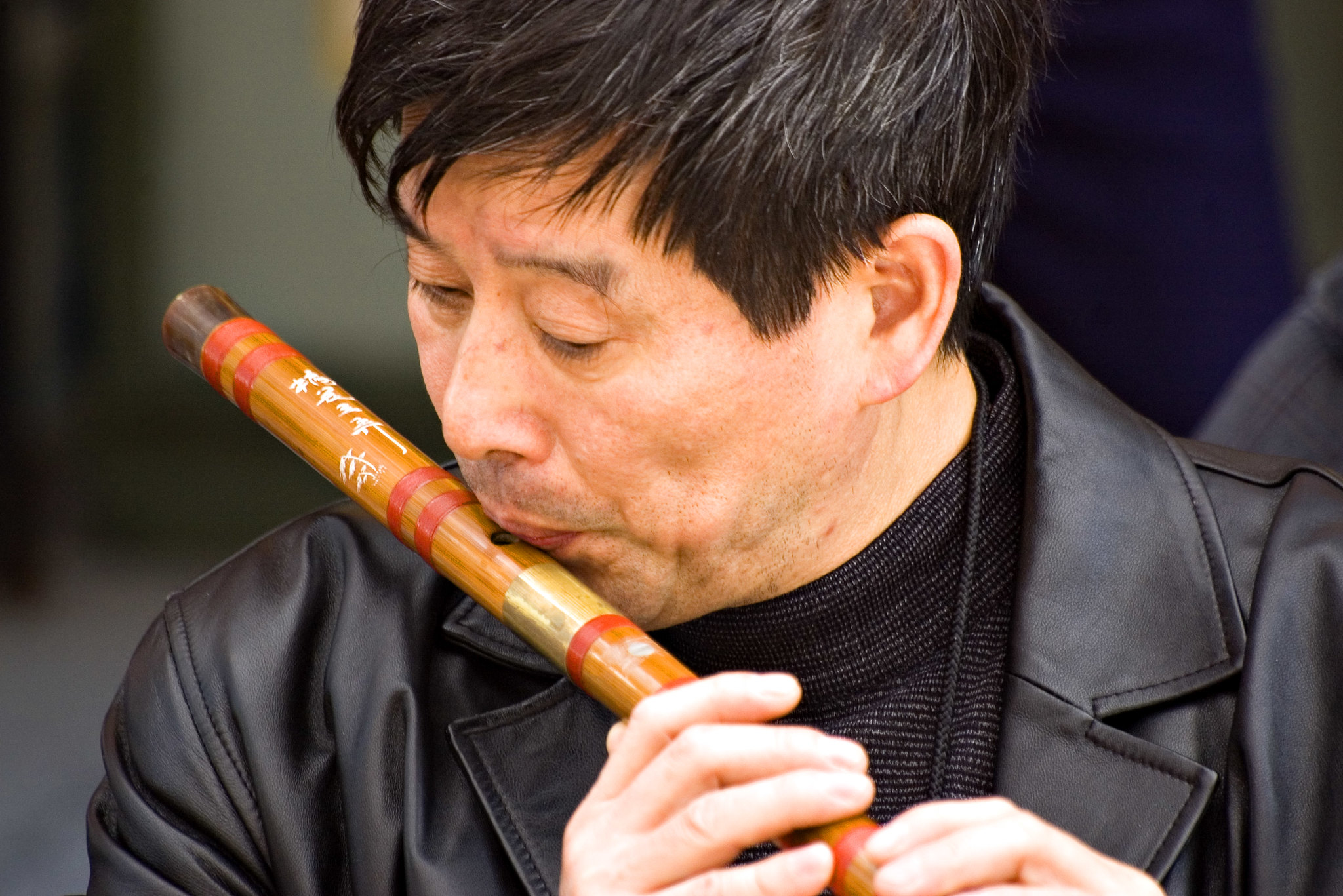The contrabass flute is a member of the flute family, which include the piccolo and C flute, the most commonly played , as well as the alto and bass flute. In fact, there are even more variations of flutes, which will likely be a whole article in of itself.
For now, we are going to focus on this large member of the family and explore what makes it unique, and where you can find one.
What Makes It Unique?
The contrabass flute is a member of the flute family, and as such, the techniques used to play it are analogous to the standard flute, making it accessible to flutist. However, as with any instrument, there are nuances that require the performer to adjust to the needs of the instrument.
Range
Of course, the most unique factor of the contrabass flute is its range. The contrabass flute sounds an octave lower than the Bass Flute, and three octaves lower than the standard C Flute.

As you can see from the image above, the contrabass flute is written on the staff like any other flute. For the most part, fingerings for the different notes on the staff remain the same or similar between instruments, but when played, the pitch on the contrabass flute is three octaves lower that it is written.
Another way of looking at this is that, as the flute plays a scale going down, its lowest note is one of the highest possible notes on the contrabass flute, making these two instruments a good compliment to each other.
Tone and Techniques
The more proficient contrabass flutists make full use of this instrument. Because of its size and the physics of flutes, the tone of this instrument can range from a very breathy sound to strong rumbling tones.
Some of the lowest notes on the instrument, when played with a solid tone can sound just like a bow being drawn across a doublebass.
The contrabass flute is a more recent instrument, and the works that are being composed for it are very new in the grand scheme of flute repertoire. As such, the techniques that are being used on contrabass flute commonly go into the area of extended flute techniques. Due to the shear size of the instrument, a lot of these techniques have more impact and are more vibrant than on higher instruments in the flute family.
The resonance of the instrument allows for percussive key clicks and slaps to be very effective, as well as tongue rams and other strong percussive articulations. Due to the range of the instrument, singing and playing has a bit more versatility.
But since this is a flute, and the mechanics are designed similarly to the C flute, this instrument can achieve the same speed of notes as a C flute, giving it some of the highest technical facility of instruments that play in this low range.
Where Are They?
Contrabass flutes are found most commonly in flute choirs, which is a type of musical ensemble consisting of nothing but members of the flute family. Typically flute choirs are made up of piccolos, C flutes, alto flutes, and bass flutes, but the rise in popularity of contrabass flutes has seen these instruments appear more and more in these ensembles.
In addition, the contrabass flute has been gaining popularity as a chamber music instrument, having more and more composers write pieces for the instrument as a solo, or within a small chamber ensemble setting.
There are not a significant number of flute manufacturers making the contrabass flute, but more and more are adding the instrument to their line of "harmony" flutes. These flutes can range in price from $10,000 and upwards, with the custom made contrabass flute by Kotato averaging $27,000.
What Music Do They Play?
As mentioned before, the contrabass flute is seen in a variety of circumstances. As with all members of the flute family, it would be typical for someone to learn and study the standard C flute before branching off into other types of flutes.
The repertoire for the contrabass flute is complex. The majority of the repertoire is being composed by flutists themselves, or by composers being commissioned to write for the instrument, so the target performers for these pieces are very skilled musicians.
Flute Choir
This instrument is fond more and more in modern flute choir music. These pieces are often composed by flutists and feature multiple members of the flute family.
In some cases, these are arrangements of existing works, such as "Vocalise" by Rachmaninoff, arranged for flute choir and cello by Toby Caplan-Stonefield. In other cases, it is original works such as Peter Senchuk's "Beyond the Nigh Sky" for flute choir (including contrabass flute).
Chamber Music
There has been a rise in chamber music literature composed for the flute in the 21st century, from solo music to mixed ensembles. The variety of the repertoire is exciting.
Peter Sheridan, a low flute specialist, has been attributed with commissioning over seventy works alone featuring low flutes. Once such piece is Patrick Neher's "City Vignettes" for Contrabass Flute, Double Bass, and Piano.
Ned McGowan, flutist and composer, has written several works for the instrument. "Benson Town" for contrabass flute and Indian percussion is a lot of fun, and demonstrates the versatility of this instrument in chamber music.
Orchestral Feature
While members of the flute family lower than the alto flute are rare, if at all, seen or written for within the texture of a full orchestra, several composers have written works where the instrument is a features soloist. The following is just a small sample:
-
Ned McGowan - Bantammer's Swing for contrabass flute and chamber orchestra. Ned is pictured with the contrabass flute in the image at the top of this article. Thanks to Ned and his team for providing the image for this article.
-
Catherine McMichael - Three Philosophies for low flutes and orchestra, featuring a movement for contrabass flute
-
Bruce Lawrence - Lyric Concerto for contrabass flute and strings
-
Dai Fujikura - Flute concerto for flute and orchestra. One performer switches between various flutes, including a contrabass flute. It is the contrabass flute that performs the concerto's cadenza.
Conclusion
A contrabass flute may be just another flute in a flutist's arsenal (so they can perform pieces that require the musician to switch), or it may be a performers primary instrument of choice, exploring various chamber works and settings that allow the instrument to shine.
This is truly a unique instrument, and is being adopted my more and more performers every day. While at one time it may have been seen as a novelty, it is becoming more and more mainstream in modern flute repertoire.




